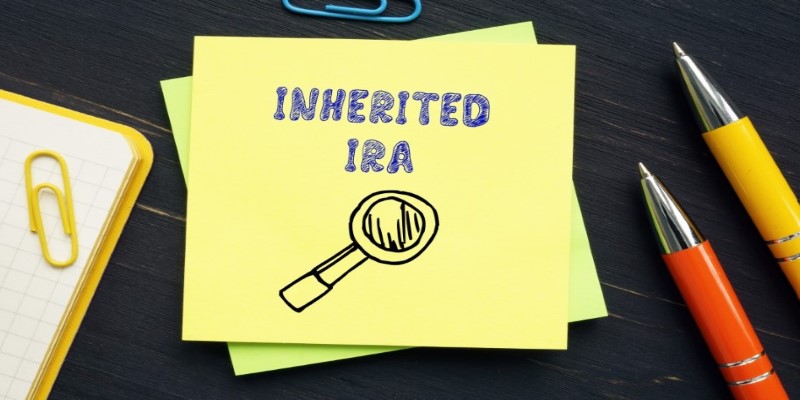Inheriting an IRA (Individual Retirement Account) can be both a financial benefit and a responsibility. However, it often raises questions, especially about what can be done with the inherited funds. One of the most common inquiries is whether an inherited IRA can be rolled over into another retirement account.

In 2024, with updated guidelines and regulations, understanding the rules around inherited IRAs is more important than ever. This article will walk you through the options available for handling an inherited IRA, clarify the rollover rules, and discuss the potential tax implications you need to be aware of.
An inherited IRA is a retirement account that is passed down to a beneficiary after the original owner's death. The rules governing inherited IRAs can vary depending on whether the beneficiary is a spouse, a non-spouse (like a child or friend), or a trust. The purpose of inherited IRAs is to allow beneficiaries to continue enjoying the tax benefits of a retirement account. Still, they also come with unique conditions and rules, especially regarding rollovers.
The short answer is nogenerally, you cannot roll over an inherited IRA into your own IRA or 401(k). Unlike traditional or Roth IRAs, inherited IRAs are subject to strict regulations intended to prevent beneficiaries from deferring taxes indefinitely. However, there are exceptions and specific guidelines depending on the beneficiary's relationship to the deceased and the type of IRA in question.
Spouses have more flexibility regarding inherited IRAs. A surviving spouse can treat the inherited IRA as their own, rolling it over into their existing IRA or converting it into a new IRA. This option is not available to non-spouse beneficiaries. By doing so, the funds are subject to the usual rules for traditional or Roth IRAs. Required Minimum Distributions (RMDs) follow the account holder's age rather than the original account owner's.
For example, if you inherit an IRA from your spouse and choose to roll it into your own IRA, you can delay taking distributions until you reach the age of 73 (as of the 2024 update to RMD rules). Additionally, you can keep contributing to the account if it is rolled over as your own.
Non-spouse beneficiaries have more restricted options. They cannot roll over the inherited IRA into their retirement account. Instead, they must either open an inherited IRA account or follow one of the distribution options set by the IRS. For most non-spouse beneficiaries, the SECURE Act introduced a rule requiring the entire inherited IRA to be fully distributed within ten years of the original owner's death. This ten-year rule replaced the old "stretch IRA" strategy that allowed beneficiaries to stretch distributions over their lifetimes, reducing tax burdens.

While a non-spouse beneficiary cannot do a traditional rollover, they still have some flexibility in managing distributions. For instance, they can choose to withdraw the funds gradually over ten years or take it all out at once. However, doing so requires careful planning to avoid being pushed into a higher tax bracket.
Tax considerations are crucial when dealing with inherited IRAs. The distributions from an inherited traditional IRA are generally taxable as ordinary income, while inherited Roth IRAs are typically tax-free as long as the account has been open for at least five years.
The rules for spousal rollovers align with those for traditional or Roth IRAs. When a spouse rolls over an inherited IRA into their account, future distributions are taxed according to the type of account (traditional or Roth) and the timing of the withdrawal. For non-spousal beneficiaries, each withdrawal from the inherited IRA is taxable in the year it is taken out if it's a traditional IRA.
A key consideration for both spouses and non-spouses is planning around the RMD rules. Even though spousal beneficiaries can roll the funds into their accounts, they are still subject to the standard RMD rules starting at age 73 (as of 2024). Non-spouse beneficiaries have to follow the ten-year rule for distributions, and failing to comply can result in significant penalties50% of the RMD amount not withdrawn, according to current IRS guidelines.
Managing an inherited IRA requires thoughtful planning to optimize the value while considering tax implications. Heres a look at streamlined strategies for handling inherited IRAs effectively:
For non-spousal beneficiaries, the 10-year rule requires that the entire IRA be withdrawn within ten years of the original owners death. The key is deciding when to take distributions. Spreading them out over the decade can help avoid a significant tax hit. If your income varies, you might take larger distributions in lower-income years to minimize taxes.
Although you cant directly roll over an inherited IRA to a Roth, converting portions of a traditional inherited IRA into a Roth during the 10-year window can be smart. Youll pay taxes on the conversion upfront, but future growth and withdrawals are tax-free. This is especially useful if you expect higher tax rates in the future.

If you need immediate access to funds, taking a lump-sum distribution is an option, though its not tax-efficient. While this might cover urgent expenses, it can push you into a higher tax bracket, so proceed cautiously.
For eligible designated beneficiaries, such as minor children or disabled individuals, the stretch IRA option allows withdrawals based on life expectancy. This strategy lets you take smaller distributions over time, allowing the IRA to grow.
When multiple beneficiaries inherit an IRA, dividing it into separate accounts allows each heir to manage distributions according to their individual needs. One beneficiary might withdraw funds early, while another could stretch it over ten years.
If you plan to leave a portion to charity, directing some or all of the inherited IRA can reduce taxable income. Charitable organizations dont pay taxes on these funds, making this an efficient way to fulfill philanthropic goals.
Inheriting an IRA can be complex, especially when it comes to the rules about rollovers. While spousal beneficiaries have the most options, including rolling the account into their own IRA, non-spouse beneficiaries face stricter rules like the ten-year distribution requirement. Navigating these regulations while balancing tax implications can be challenging, making it crucial to plan and consult professionals when managing an inherited IRA.

By Noa Ensign/Sep 20, 2024

By Elena Davis/Sep 25, 2024

By Maurice Oliver/Sep 20, 2024

By Verna Wesley/Sep 25, 2024

By Kristina Cappetta/Sep 20, 2024

By Celia Shatzman/Sep 21, 2024

By Susan Kelly/Aug 24, 2024

By Celia Kreitner/Sep 26, 2024

By Juliana Daniel/Sep 25, 2024

By Celia Kreitner/Sep 26, 2024

By Aldrich Acheson/Sep 25, 2024

By Christin Shatzman/Sep 26, 2024